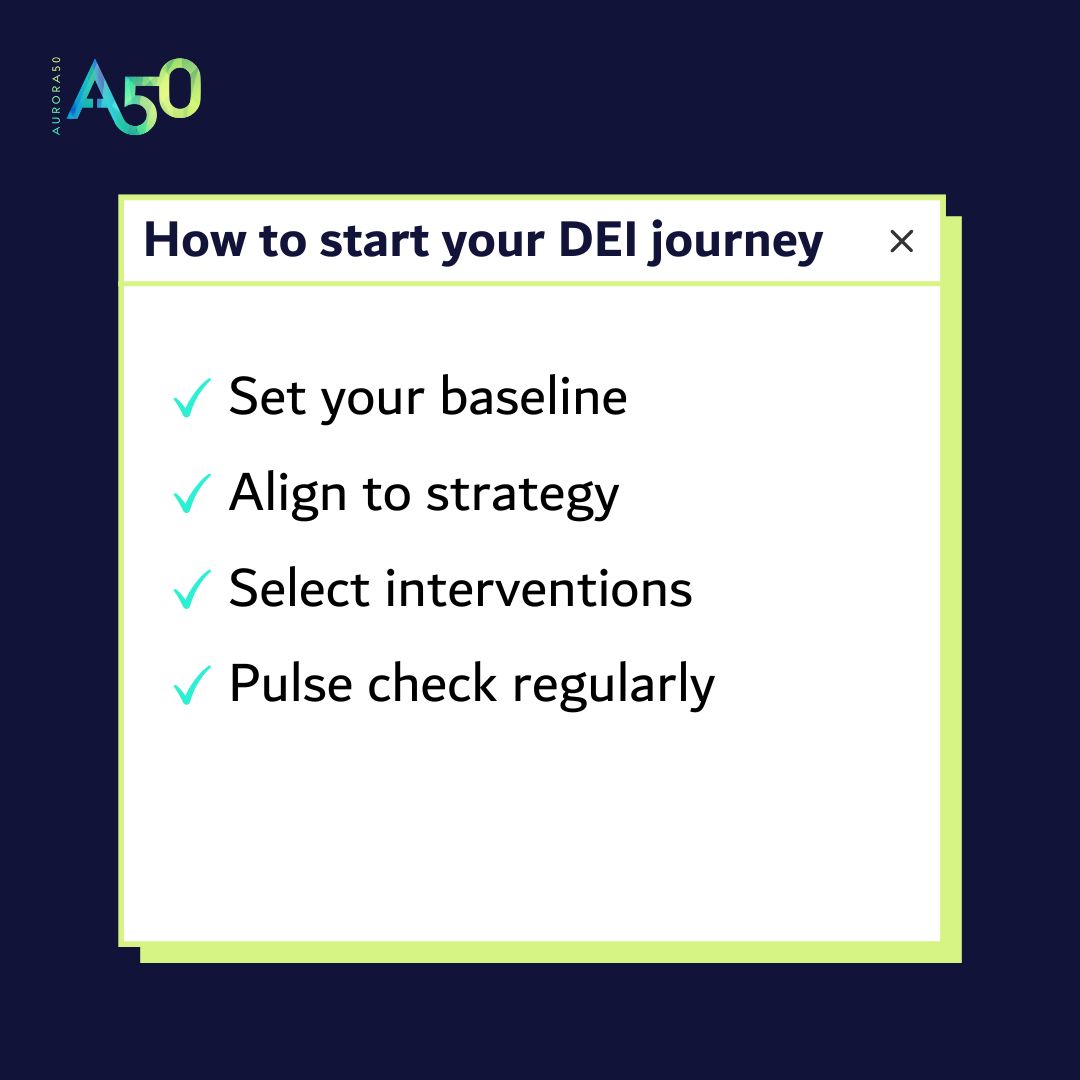Start your DEI journey with a pulse check
Diana Wilde 21 November 2022
There are four things to consider at the start:
Set your DEI baseline 📈
This is the most important task. Data gives validity to your DEI work.
Start by collating your internal quantitative workforce data – e.g. the number of women or people of determination in your company, nationalities, grades, ages, their time in business.
Pull together results from any annual surveys.
Benchmark competitors both locally and internationally and choose who you want to compete with.
Remember to be bold when setting targets to align with your industry. If you set a six percent target to meet the international industry standard, the industry may have moved up to 15 percent by the time you’ve achieved it.
Now layer in qualitative data. Ask people how they feel. Get views from different lenses.
Unless you speak to parents, for instance, you won’t know that you don’t have good breastfeeding facilities.
Even when you try to empathise, you bring bias: you were once a new starter in your company, but you will never again know how that truly feels.
Aurora50’s
Table Talks acts as a series of interviews to uncover the issues people are living with and gives you a heatmap of DEI in your business, pulling out trends, themes and patterns and giving voice to a larger group.
Align DEI to company strategy 📊
Now you need to make your business case.
There is a clear link between diversity and business performance, and we are often told that the business wants to see statistical evidence that DEI works. Check
our stats sheet for some numbers you can use.
Make sure you are aligning DEI to your company strategy. This is how you get backing and funding.
If you can split your DEI work into the internal and external, this also maps well to ESG’s breakdown of material risks and external impact.
You want to show how DEI will affect your organisation’s material risks – that is, its financial condition or operating performance. This will help get buy-in from not just leaders but your organisation’s board, shareholders and investors.
Also consider the national or regional agenda. For instance, in the UAE:
Complaining about not achieving success despite working hard is like complaining about an ice cube not melting when you heated it from 25F to 31F. All the action happens at 32F (0C).
James Clear, Atomic Habits
Select your DEI interventions ⛑
You can’t do it all at once so it’s time to apply a particular diversity lens, which will depend on where your business is at compared to industry standards and strategy.
Choose the lens that matters to you – could it be a focus on gender first, or Emiratisation?
Remember that DEI is not just about improving soft skills, either. Depending on your company’s work, there may be workplace issues to fix.
Wearing ill-fitting PPE was leaving women exposed to the risk of slips, trips and falls, sleeves snagging in machinery and additional danger from flash fires.
Pulse check regularly 🩺
Doing an annual survey is not enough, nor does it help you move quickly enough. If your company is losing large numbers of women staff, it shows the business is not listening.
If you hold town halls monthly or quarterly, you can add some DEI exercises – it shows the business’ commitment to a diverse, equitable and inclusive workplace.
Table Talks can be done monthly or quarterly, and ongoing DEI work such as this shows your organisational dedication.
It takes time to develop people and you won’t see change trickling in. Instead, change will come with a bang.
As James Clear says in Atomic Habits, “Complaining about not achieving success despite working hard is like complaining about an ice cube not melting when you heated it from 25F to 31F. All the action happens at 32F (0C).”





